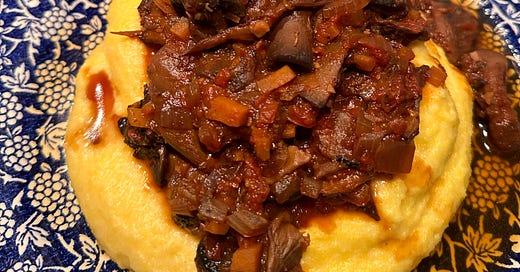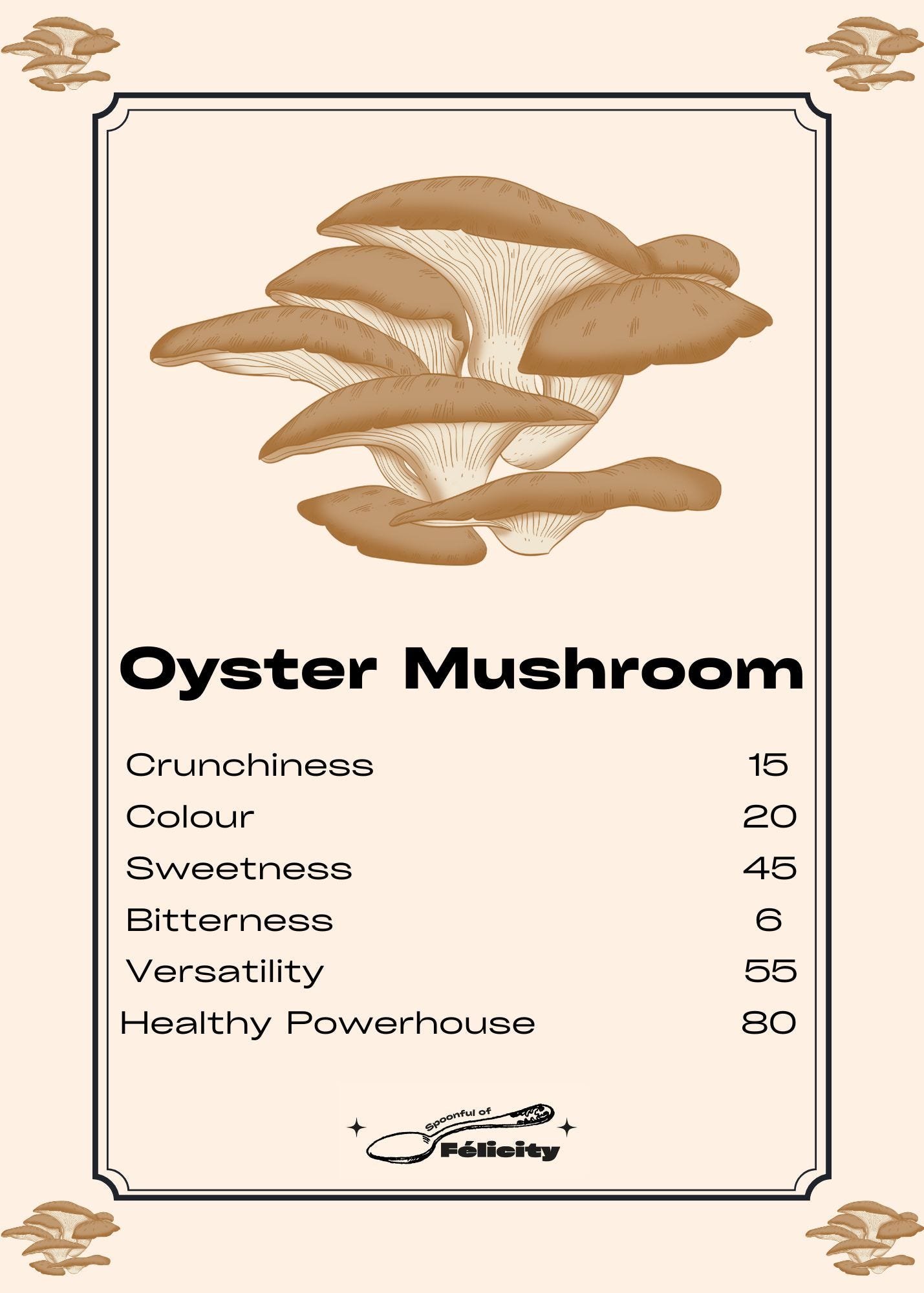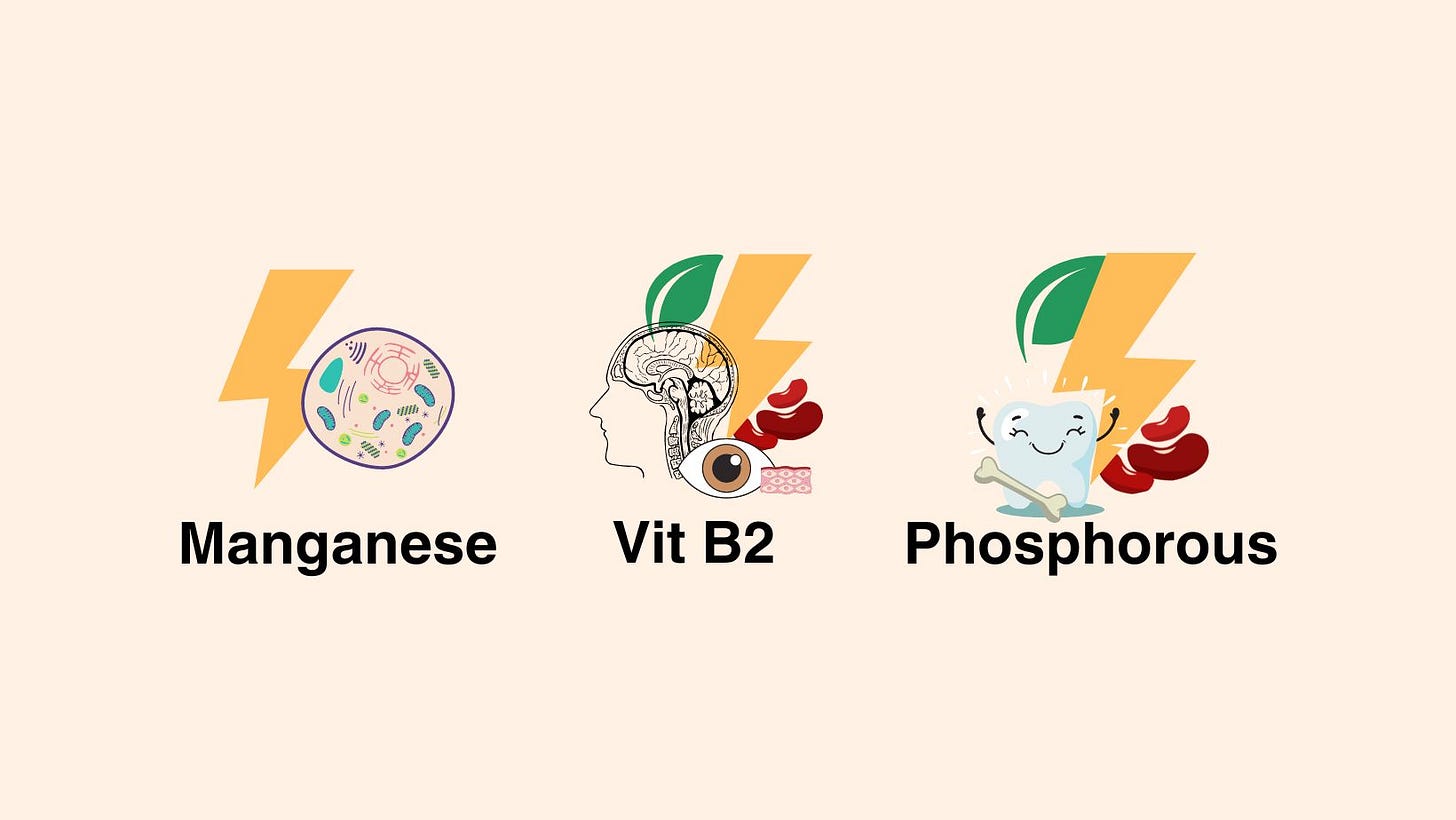September #2 - Oyster Mushrooms
The addictive texture of a pearl oyster mushroom is undeniable.
HISTORY:
Mushrooms have been around for centuries and appreciated for their health properties by many cultures such as pre-battle food for the Ancient Greeks and traditional Chinese medicine. Although oyster mushrooms have been growing in the wild for centuries, eating them is a more recent discovery for humans.
They grow naturally on hardwood trees, such as beech, and were eaten by foragers during the rationing of World War I across Europe, which led to their cultivation in Germany in 1917. They became popular across North America and Asia also, with China now being the biggest producer.
The most common Oyster mushroom is the Pearl Oyster or Pleurotus Ostreatus, but there are 6 other mushrooms belonging to the Pleurotus genus.
FUN FACTS:
Why did everyone have to resist the temptation of inviting the oyster mushroom to the party? Because he’s a fungi but he’s carnivorous! One of the few actually, oyster mushrooms feed on decaying wood but also get their nitrogen from passing nematodes (they’re small roundworms, in case you were tempted to google it like I had to).
This isn’t mind blowing, but they take their name after their cap shape, which resembles an oyster shell… if you squint a bit.
More common in spring and autumn, they can grow all year round after a sharp change in temperature such as a sudden downpour of rain typical of September.
Oyster mushrooms can be used to detoxify certain environments, such as diesel contaminated soil.
HOW TO COOK THEM:
Raw: Although a yellow oyster might be more recommended as it is harder, they can easily be added raw to salads, just give them a bit of a wash. They also make a very satisfying pickle.
Cooked: Best known for their meat-like texture, they are great torn up into strands and added to stir fries, curries, stews and sauces. They will add a slight nuttiness and umami flavour along with their satisfying slow cooked meat-like texture. They are also delicious grilled or pan fried in oil until crispy. And again, due to their texture, they’re delicious when battered/breaded and fried.
Oyster mushrooms pair particularly well with woody/oaky flavours such as whisky, certain red wines, coffee, rosemary and other mushrooms; they also contain some benzaldehyde and therefore pair well with almonds, raspberries and cherries; they complement carbohydrates like sourdough, lentils, potatoes or rice very well; they’re delicious with aromatics such as chive, parsley or dill, and complement other umami ingredients very well such as miso, soy sauce, anchovies, tomatoes, confit lemon, garlic and parmesan; balance them out with sweetness from honey, maple syrup or fruit; or with tangy or creamy ingredients such as mozzarella, yogurt or fermented foods.
Some of my favourite oyster mushroom dishes to try:
Oyster mushroom tacos by Yotam Ottolenghi and Ixta Belfrage (Flavour);
Charred oyster mushroom skewers by Helen Graham (Bubala);
Mushroom ragu (see below);
Oyster mushroom stir fry noodles;
Mushroom and chestnut soup (free recipe);
MOOD FOOD - FOCUS:
B vitamins - being low may lead to lethargy and feeling tired;
Polyphenols - support brain health and slow down neuro-degeneration;
Manganese - is required for brain signalling, supports improved cognition and reduced risk of neuro-degeneration;
Beta-glucans - help to maintain steady blood sugar levels and a prolonged release of energy from food for body and brain;
RECIPE:
Mushroom Ragu & Polenta
Ingredients (serves 4):
Mushroom ragu recipe:
300g mixed mushrooms (including button and oyster mushrooms if possible)
30g dried porcini mushrooms
1 white onion
1 carrot
1 celery
3 garlic cloves
8g thyme
250mL red wine
1 tin of tomatoes
Sea salt
1 Tbs rapeseed oil
Cheesy polenta recipe:
180g polenta
920mL milk
70g parmesan
20g butter
Sea salt
Method:
How to make my easy mushroom ragu recipe:
Place the dried porcini mushrooms in a heat-proof jug and cover with 500mL of boiling water. Leave to rehydrate while you prep the rest.
Brush the dirt off the mushrooms using a clean dry sponge. Cut them up into quarter or bite-sized pieces, tear the oyster mushrooms into small filaments. This will mimic the texture of slow cooked meat.
Peel the onion, carrot and celery then dice them up as small as you can.
Sweat the mushrooms off in a dry saucepan for 6 minutes on medium heat. Then add 1 Tbs of oil and leave them to caramelise for 2 minutes.
Once the mushrooms have browned, add the diced onion, carrot and celery and let them sweat off for 5 minutes stirring occasionally.
Add the crushed garlic cloves, thyme sprigs and deglaze the pan with the red wine.
Let the wine reduce for 5 minutes, then pour in the tinned tomatoes and dried porcini mushrooms (including the soaking water).
Bring the ragu to a boil, then reduce the heat down to a simmer. Cover the saucepan and leave on the heat for at least an hour.
Stir into pasta or serve on top of mash or polenta. Dig in and enjoy, bon appétit!
How to make my cheesy polenta recipe:
In a saucepan, bring the milk to a boil.
Reduce down to a simmer then slowly sprinkle the polenta in while continuously stirring.
Keep stirring it on the hob for 5 minutes as it thickens.
Add the butter and grated parmesan, then stir it in.
Either serve up while it's hot or leave it to solidify in a dish and slice it up to serve.
More about this mushroom ragu recipe:
Shortcuts:
The longer the ragu simmers away the deeper the flavour, if you are short on time you can cook it for 30 minutes only, just bear in mind leaving it longer will take it to the next level.
Keys to success:
Oyster mushrooms are key to getting a satisfying texture, similar to slow cooked meat that falls off the bone.
Any umami additions are welcome: cheese rinds, marmite, or Worcestershire sauce.
Health benefits of oyster mushrooms:
They're a good source of:
vitamin B2 - which is needed to transform food into energy, support the nervous system and maintain healthy vision and skin;
Phosphorous - which is needed to transform food into energy, and maintain healthy bones and teeth;
Manganese - which is needed for energy and cell health;
Aside from the above, oyster mushrooms also contain other active compounds:
Phenolic chlorogenic acid - an antioxidant which therefore scavenges free radicals, reducing oxidative stress, reducing the risk of certain cancers, cardiovascular diseases and physical signs of ageing. Chlorogenic acid also has strong anti-inflammatory properties which contribute to brain and heart health. Early studies show promising affects on type 2 diabetes symptoms and preventing strokes.
Phenolic gallic acid - an antioxidant with anti-inflammatory properties which has also been shown to support heart health.
Phenolic naringenin - Aside from its antioxidant properties, it has also been shown to block pain caused by inflammation.
Polysaccharide beta-glucan - Beta-glucans are a prebiotic fibre, meaning they reach the lower intestine and are fermented by our gut bacteria which in turn produce short-chain fatty acids that reduce LDL cholesterol production. They also slow the release of energy from food therefore reducing blood sugar levels. Maintaining a healthy collection of gut bacteria also in time has positive impacts on our health and mood.
Amino acid ergothioneine - has antioxidant and cytoprotective properties, acting as an anti-inflammatory and supporting cell health.
These all may contribute to anti-tumor, anti-inflammatory, anti-cancer, anti-diabetic and hepatoprotective properties.
Finally, mushrooms are a non-animal source of vitamin D. If they are sufficiently exposed to UV rays from lamps or sun, they will produce vitamin D which supports bone, teeth and muscle health. It is also necessary for the function of our thyroid gland which in turn regulates hormones. Low amounts may lead in part to low mood and lethargy.






